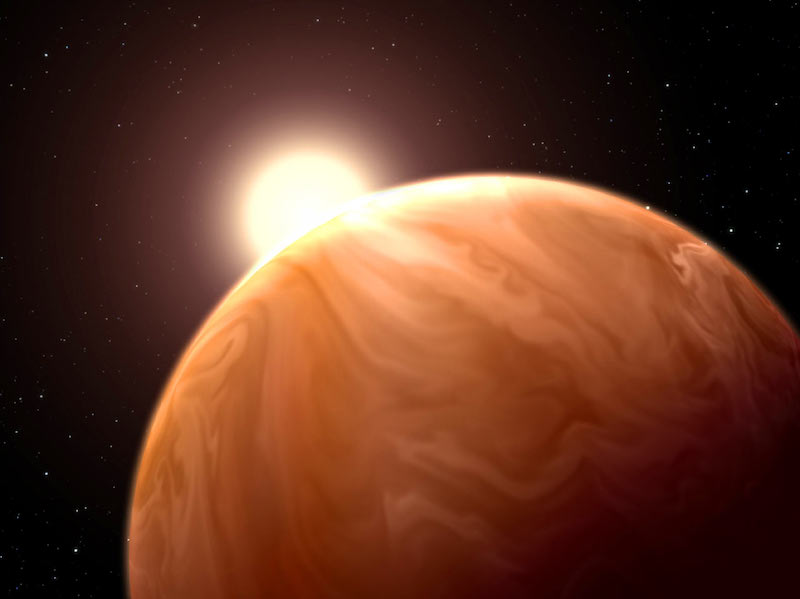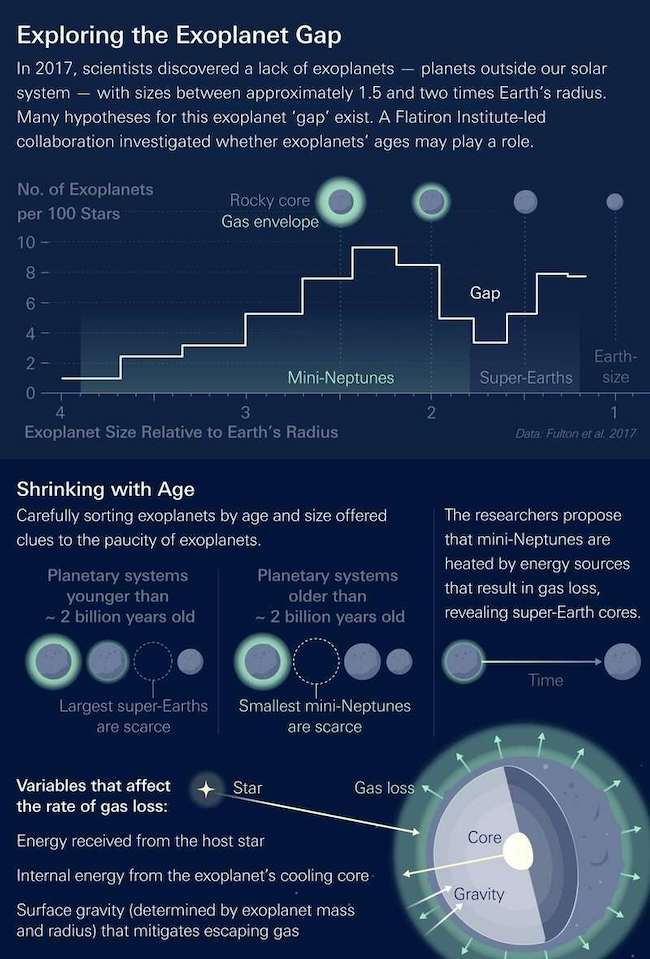
Can planets shrink? New research from the Flatiron Institute in New York City suggests they can. Shrinking planets might be the solution to the mystery gap in the sizes of exoplanets discovered so far. Planets between 1.5 and two times Earth’s radius are mostly missing. The idea is that mini-Neptunes – smaller than Neptune but larger than super-Earths – might lose their thick atmospheres and thereby decrease in size.
Astrophysicist Trevor David of the Flatiron Institute led the new research. It was published in the peer-reviewed Astronomical Journal on May 14, 2021.
Astronomers noticed the so-called radius gap in exoplanets in 2017. Many planets are either smaller than 1.5 times Earth’s radius. Many are larger than two times Earth’s radius. But few are in between. Astronomers wanted to know why.

Shrinking planets are aging planets
Trevor David and colleagues took a new approach to the problem of the radius gap. They wondered if it changes with planets as they age.
To explore this possibility, they used data from the space-based Kepler exoplanet-hunter, whose mission ended in 2018. They divided the exoplanets being studied into two groups: younger and older than two billion years. And they found something interesting. Among the younger planets, the least common size was smaller than the least common size in the group of older planets.
The rarest young planet had a radius 1.6 times that of Earth. The rarest old planet had a radius 1.8 times that of Earth. The researchers included only those planets for which the sizes were known with a high degree of certainty. What, then, does this finding mean?
It appears to mean that mini-Neptunes “shrink” over billions of years, losing most of their atmospheres. They leave behind a rocky core and become a super-Earth. They don’t seem to become planets between mini-Neptunes and super-Earths in radius. Instead, they go straight to the super-Earth phase.
The gap is between the largest possible super-Earths and the smallest possible mini-Neptunes, still massive enough hold on to their thick atmospheres. As David explained in a statement:
The overarching point is that planets are not the static spheres of rocks and gas we sometimes tend to think of them as. Some of these planets were 10 times larger at the starts of their lives.

Why mini-Neptunes lose atmosphere
Two culprits may be responsible for the loss of the planets’ atmospheres. The first may be photoevaporation, where intense radiation from the planets’ host stars (red dwarf stars in particular) strip away planetary atmospheres. The second may be leftover heat from the planets’ formation. Both factors can cause a planet’s atmosphere to leak slowly into space. David commented:
Probably both effects are important, but we’ll need more sophisticated models to tell how much each of them contributes and when.
Other possibilities
Another possibility is that a planet’s thick atmosphere is eroded away by collisions with asteroids or other small space rocks. This activity would prevent smaller planets from accumulating enough gas to maintain a substantial atmosphere. It’s estimated that this process might take about 10 to 100 million years.
Or the gap might occur during the planets’ initial formations. It could be that, when some planets form, there isn’t enough nearby gas to form thick, deep atmospheres on those worlds. In this scenario, those planets’ radii, and therefore the radius gap, are set from the beginning.
What’s next for these scientists? They want to figure out which processes dominate in creating the radius gap. Finding out could be tricky, they said, because they’ll need to take into account other factors such as interactions between fledgling atmospheres and planetary magnetic fields or magma oceans.

Bottom line: Scientists may be closer to understanding the so-called radius gap, a lack of exoplanets between 1.5 and two times Earth’s radius. The answer may be shrinking planets: mini-Neptunes that lose their thick atmospheres and become smaller super-Earths.











